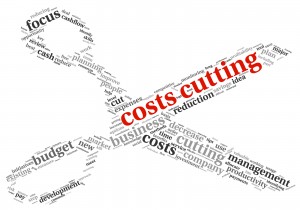 IT Asset Management is so much more than just software and hardware. It can be the key to efficiency and cost-cutting in your organization.
IT Asset Management is so much more than just software and hardware. It can be the key to efficiency and cost-cutting in your organization.
IT Asset Management is an entire business practice. A comprehensive system goes far beyond just software and hardware – it should bind together financial control, inventory management, contractual compliance and IT security to provide a comprehensive platform for strategic decision making.
1. Account For Each of Your IT Hardware and Software Assets
IT assets are central to your company’s ability to deliver services and support them. Managing current IT assets needn’t be complex or overly time consuming. An automated asset discovery system will help you manage your current assets easily and efficiently. In order to deliver quality services at the right cost, it is essential to know what is on your network, where it is located, or how it is configured and being used.
2. Establish Standard Processes for IT Asset Management
Clearly defined best practices that are automatically tracked will give you control over every aspect of the assets within your network. You must have a system for directly and efficiently managing all asset acquisition and usage, maintenance and upgrades, as well as inevitable replacement or disposal. Then you can be certain your assets are working cost-efficiently for you.
3. Track Software License Compliance
First and foremost for software license compliance is comprehensive and accurate record-keeping. Second is understanding the terms of the license. An effective IT Asset Management system keeps this information on hand and can keep you informed of obligations for compliance and reduce vulnerability during vendor auditing. Fines are often very costly. According to Aaxnet: “The maximum penalty is $150,000 per license ‘deficiency’. Typically, this is negotiated down and a company found deficient at around $8,000 will pay a penalty of around $85,000 (and have to buy the $8,000 in software, too).”
4. Protect Against IT Asset Vulnerabilities
Bad vulnerability management practices are expensive and disruptive to productivity. Use an IT Asset Management system to help you be informed and proactive about IT assets that are potentially at risk from attacks, denial of service, Trojan Horses, etc. It is a necessity to keep security patches up to date and configurations secure.
5. Prevent Unauthorized Device and Software Usage
Internal privacy breaches and data leakage can be as damaging as external attacks. An accurate overview of your IT estate can protect against device theft and the loss of sensitive corporate and customer data. An effective management solution can help define policies and protect these expensive-to-recover assets.
6. Keep Your Assets Green
Power management is an ever-growing concern as energy costs grow along with your asset acquisitions. With a central automated system, assets can be managed to configure and deploy detailed power management policies that focus on individual users’ specific work patterns and needs. When your company reduces energy consumption, it is good for the environment and the reduced costs are good for your bottom line.
7. Implement an IT Asset Management System that Grows with You
Choose the right solution: a single, unified IT Asset Management system that will grow seamlessly with the needs of your business. Having a central system as opposed to segregated products will produce lower recurring costs, smoother learning curves, and more fluid deployments across your network.
Creative Commons Attribution: Permission is granted to repost this article in its entirety with credit to Crow Canyon Systems and a clickable link back to this page.

